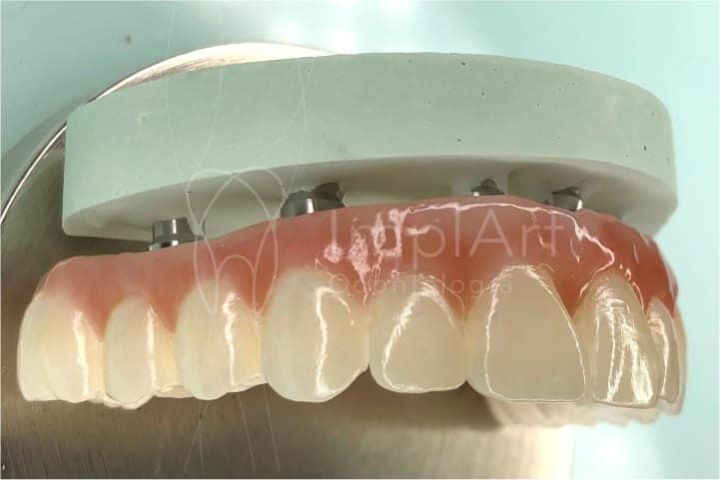
Fixed dental prosthesis in pure 3D translucent zirconia
Among the latest material options for making a fixed prosthesis for a full arch implant, total implant or protocol prosthesis, we now have an innovative technique full of advantages: 3D pure translucent zirconia. Zirconia is currently the most modern material for both full and partial dental implant prostheses. It is also the most suitable material for dental crowns on single implants or fixed prostheses.
Zirconia dentures combine beauty and strength
Pure zirconia is also known as cubic zirconia, translucent zirconia, monolithic zirconia and black zirconia. It is currently considered the most modern and resistant material for making dental crowns.
Dental prostheses made from this material are fixed onto dental implants previously placed in the upper or lower jaw.
In order to offer patients the most modern treatments, the ImplArt dental clinic has once again innovated by pioneering the best European technology (Austria) to manufacture 3D zirconia dental prostheses in its own laboratory.
Its modern manufacturing allows treatment to be carried out using 100% computerized techniques, with complete digital planning of the case. This means more comfortable treatment for the patient, much more predictable, and above all, faster.
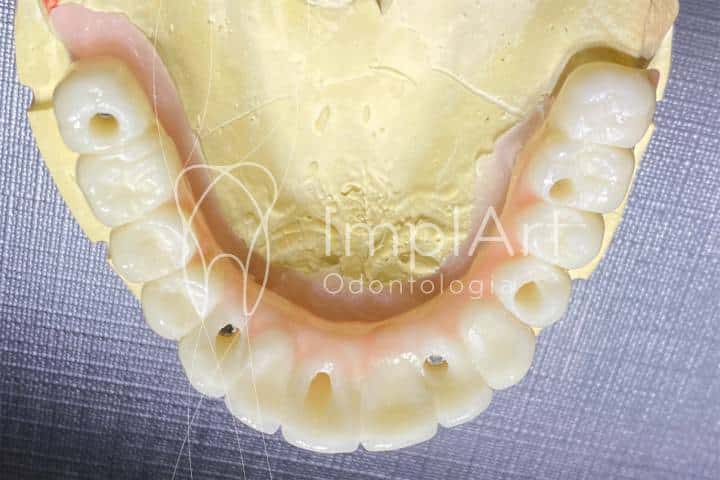
Planning 3D zirconia implant/prosthesis treatment
For a complete treatment with dental implants, there must first be an extensive conversation between the dental surgeon and the patient. The definition of the total treatment takes place in 3 stages:
- 1- Firstly: Planning the surgical and prosthetic aspects of the all-tooth or partial implant case. First of all, the patient’s needs are studied, with a clinical assessment and radiological examinations, so that the case can be planned precisely before it is carried out.
- 2- Secondly: Performing the surgery to install the dental implants. At this point, a temporary transition prosthesis for the full arch should also be installed.
- 3- Thirdly: Preparation of the final dental prosthesis. Once the implants have healed, the long-awaited making of the complete prosthesis begins, according to the material chosen by the patient at the start of their treatment.
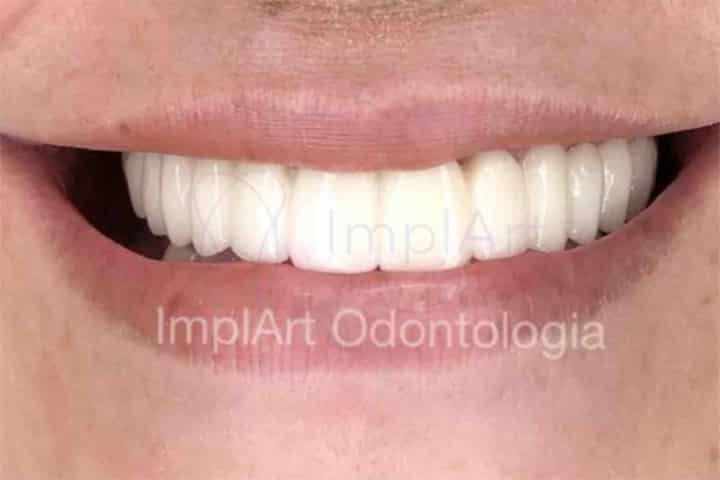
Not all protocol prostheses are the same and made of acrylic!
The choice of implant prosthesis material
Nowadays, you can choose from a variety of materials for fixed prostheses on implants (dental protocols). In the past, there were only metal-ceramics (metal structure and porcelain exterior) and acrylic (resin), made by hand.
Today, ImplArt is able to offer patients options with extreme resistance and superior aesthetics, such as computer-engineered translucent zirconia. In this sense, each type of prosthetic material can have an impact on the patient’s treatment in terms of price, preparation time and the final aesthetics of the total implant.
Therefore, in this article, we will explain the most modern model of fixed prosthesis on implants: the computerized translucent zirconia prosthesis, as well as its advantages and characteristics.
What is 3D dental zirconia? Zirconia is a white material that has the strength of a metal
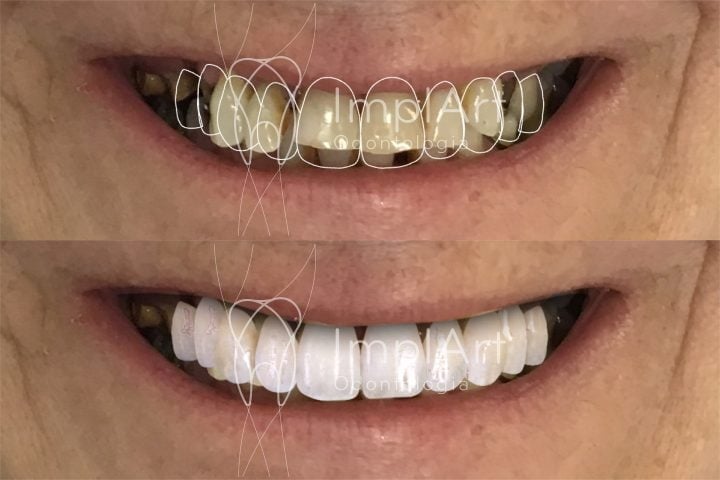
Types of zirconia prosthesis for dental protocols
Today there are three types of dental zirconia to better perform protocol prostheses on implants (fixed dental prostheses), namely :
- 1. milky whitezirconia structure (lower volume), together with applied porcelain overlay (higher volume)
- 2. 3Dtranslucent zirconia prosthesis (larger volume), i.e. with a small application of porcelain on the outside of the teeth (smaller volume)
- 3.3D monolithic pure zirconia prosthesis (full volume) with make-up, so no additional porcelain applied
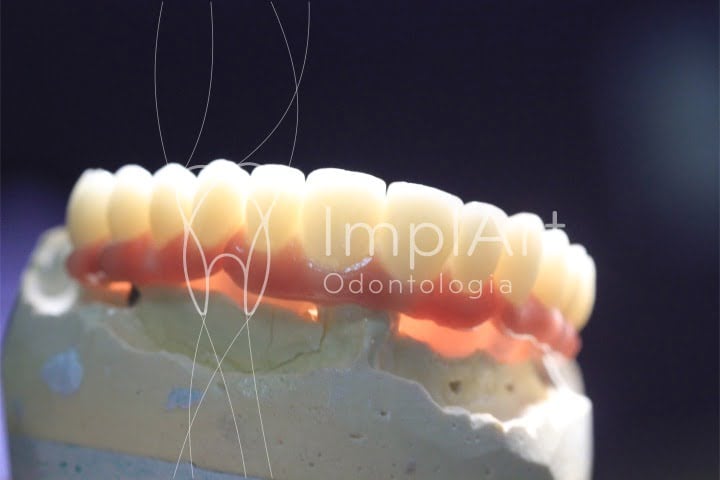
What does the 3D translucent pure zirconia implant prosthesis look like?
In this type of zirconia prosthesis, there is only a small porcelain overlay on the structural part of the prosthesis. In short, the entire final process of making the monolithic zirconia prosthesis is done by computer programs and robotic machines( Digital Dentistry).
Therefore, we are sure that the fittings will be perfect, the anatomy will be that of natural teeth, and the colors will be realistic.
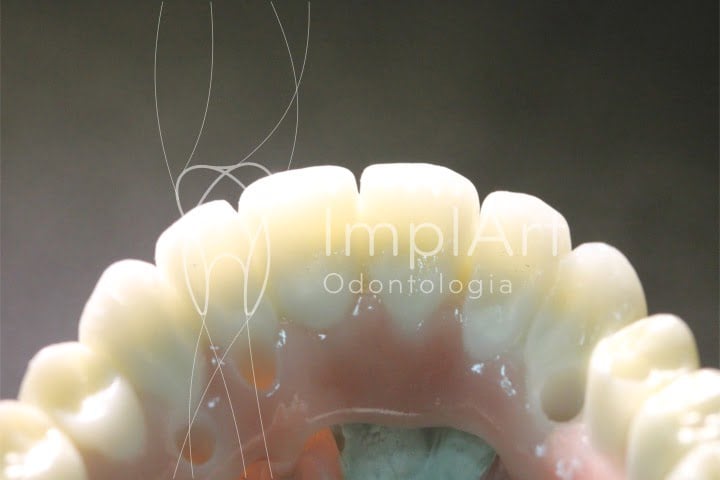
Advantages of the 3D zirconia protocol prosthesis
In contrast to metal as a structure, the main advantages of translucent zirconia are its biocompatibility, excellent aesthetics and extreme resistance. Zirconia, with the white structural part of the dental prosthesis, undeniably enhances the natural cosmetic characteristics of porcelain.
In fact, dental zirconia is exceptionally strong and durable as a base. So much so that the use of small portions of porcelain over this translucent zirconia structure provides complementary aesthetics for the complete implant.
In addition, zirconia is a super biocompatible and anti-allergenic material and is also used in white dental implant posts.
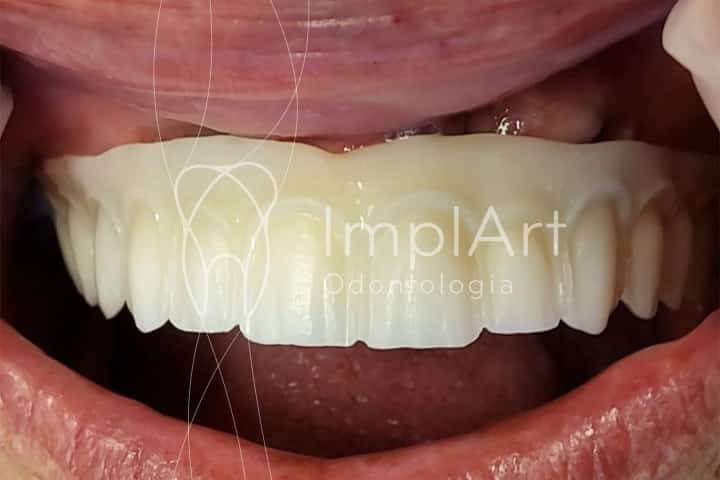
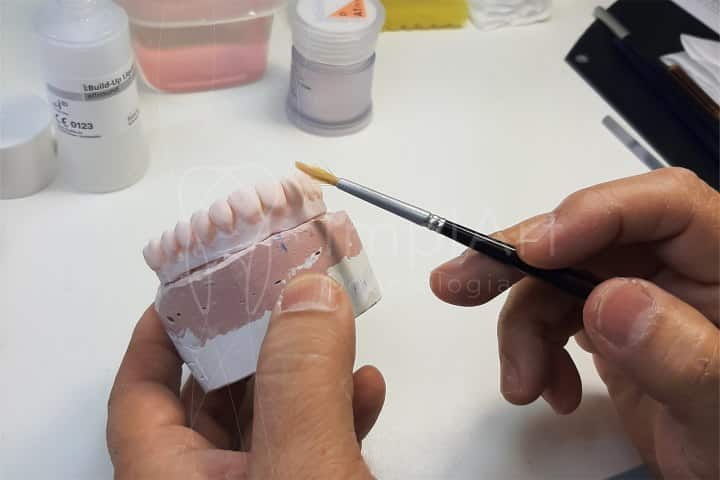
Read more: Aesthetic cores for dental crowns
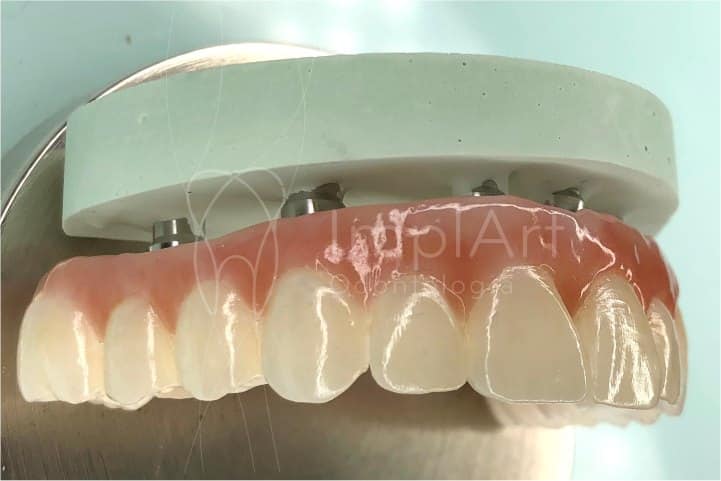
Superior aesthetics of 3DZirconia
Dental zirconia can be custom-made in such a way that it resembles the enamel and gum tissues, thus optimizing the aesthetic result.
Translucent dental zirconia is undeniably the best material for fixed prostheses on implants, as it offers translucency, naturalness and strength as a result.
First of all, it should be noted that the zirconia protocol prosthesis makes no noise when chewed, is not heavy, nor does it damage dental implants, and certainly not opposing teeth.
Translucent dental zirconia is a material that above all does not change color, does not stain and therefore does not wear out with use.
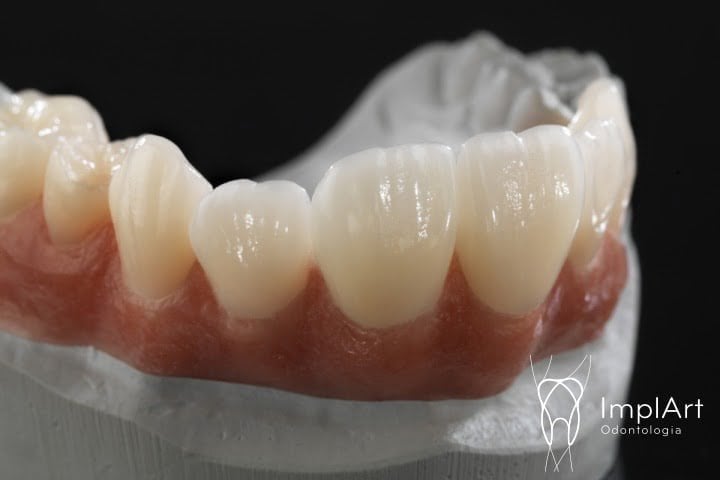
How are 3D translucent zirconia dentures made?
The ImplArt Clinic has all the infrastructure to make your zirconia fixed prosthesis in its own laboratory. Here’s how it works: a zirconia dental prosthesis is manufactured using computerized processes, starting with the milling of a solid block of zirconia.
Above all, because it is a CAD-CAM (computerized) job, your dental project is stored in our laboratory, so the original project can be printed again quickly, should the need arise.
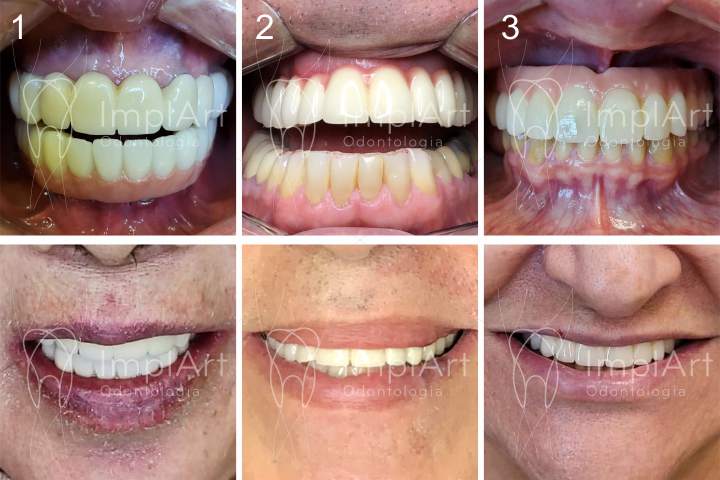
Maintenance of fixed 3D translucent zirconia dental implants
First and foremost, zirconia is extremely resistant and is certainly the strongest material for dental use. As such, its resistance is superior to porcelain and, of course, resin.
Maintenance for a zirconia prosthesis involves a visit to the dentist every 6 months for prophylaxis, in order to monitor oral health in the same way as recommended for all other patients.
The risk of the prosthesis fracturing is, above all, very rare, due to a characteristic of the material.
With regard to the color and shape of the teeth, these remain unchanged over time, making the material an excellent choice for its durability and, above all, long-term aesthetics.
It is always important to remember that, once treatment is complete, you should visit your dentist every 6 months for prophylaxis and to monitor the results of your treatment.
 Agende sua consulta agora por WhatsApp
Agende sua consulta agora por WhatsApp
Leave a Reply